DFAM — or DESIGN for 3D PRINTING
Engineers are looking at redesigning parts in an entirely new way, but the possibilities opened up using additive in the actual design of parts aren’t free by a long shot. There is a whole new set of design constraints that needs to be considered. Those constraints are numerous, but some of the most common elements that can lead to a failed build or add expense or time to the process include:
Layer Height: For processes where material is deposited in uniform layers, the height of layers affects build time and finish quality. Generally speaking, the thicker the layer, the faster the print, but the rougher the finish.
Wall Thickness: This can be a challenge for companies trying to migrate an existing design that was previously injection molded or machined to a 3D printing process. Very thin walls won’t survive the print process, while very thick structures will result in slow builds and higher costs. Hollow out or use a honeycomb fill for a thicker geometry, and even that still requires a large volume of material that may be cost-prohibitive. Wall thickness also affects material curing rates (with some processes) and part performance. If you design a hinge or a snap fit, the wall thicknesses around those features are going to affect how the part works.
Shrinkage/Warping: This can vary based on the material and printing process. As the material cools during the build, different features can warp or shrink, which causes cracking. Consistent wall thicknesses can help avoid this, as can part orientation on the print bed.
Support: Holes, overhangs, edges and other surfaces may require support structures during the build process that have to be removed in post-processing. Removal of the supports can affect the final finish quality. In addition, a design that requires too many supports can result in large amounts of expensive scrap material and slower build times. For some processes, water-soluble supports can be easily washed away in post-processing. Others require time-consuming machining or sanding. Designers can reduce the need for supports by avoiding sharp overhangs and angles. Design around self-supporting angles so you don’t need the supports running up the side of the part, that also improves build speeds and reduces cost, as well as shortens post-processing time.
SPONSORED CONTENT
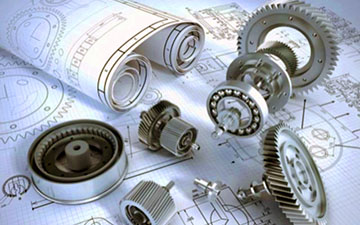
Your Service Flyer
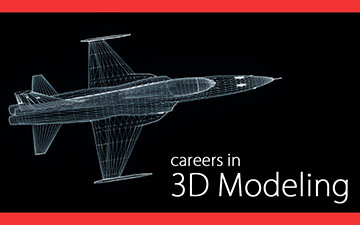
Your Event Invitation
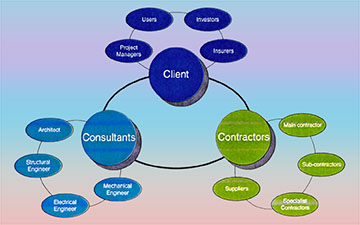
Your Promotion Ads
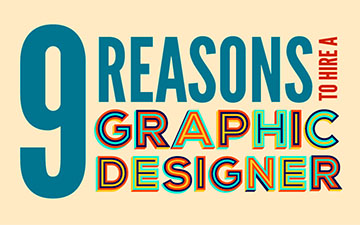
Your Logo & Brand
Support us and grow your business with us. My goal was to make technical information available with ready access to commonly needed resources, formulas, and reference materials while performing my work as a Technical Support Engineer. The businesses listed in Sponsored Content were carefully selected because of their uniqueness. However, non-sponsored selected ads will be rotated monthly.
ViBa Direct lacks an advisory board to do research and hire writers with the latest technical knowledge. Creating an effective advisory board requires more than an invitation. Without your sponsorship, this is not possible. If your company is interested in placing the company’s logo, brand, event invitation, and other promotional banners and flyers here or on any other pages, please reach out to Customer Service for more detail.
Orientation: The orientation of the part in the print bed can have a significant effect on build times, the need for supports and even the strength of the final product. In Fused Deposition Modeling (FDM) and other processes, the layering of the material during printing can affect part strength. Parts under tension should be printed with the build direction parallel to the load. Orientation is an important topic designers should discuss with the manufacturing team. It’s often a surprise to customers because it can jack up the lead times and time-to-part, and also significantly affect the part price.
Variability: With the exception of expensive, high-end production systems, 3D printing still generates a lot of variability in quality. The same machine can give you different results depending on the time of day, the operator or the age of the material being used. Many AM systems can require a significant amount of maintenance and calibration to ensure part consistency. AM is not nearly as stable as injection molding, 3D printed parts produced a lot of variability and dimensionality, as well as differences in surface clarity of parts.
Holes: There are two types of challenges when it comes to holes. First, some print processes (like those using powder) require escape holes so that excess material can be evacuated during or after the build. The holes can be plugged or filled after printing if they affect the performance of appearance of the part. Putting holes all over a design doesn’t always appeal to people, but the risk of the print failing are usually the results. There are solutions, such as plugging the holes and sanding them. Quality is really the main driver.
Holes that are part of the actual design present different challenges. To print a circular, horizontal hole requires a significant amount of support material. Luckily, in the 3D printing world, holes no longer have to be circular. No matter how perfectly the machine can print, never trust a round hole to come off that machine, regardless of part orientation. Always reaming out the holes using conventional methods. Because of this, design undersized square holes that are rotated 45° instead of a hole round to eliminate the support inside that hole, which slows down the process and wastes material. Convert that to a square and rotate it, the software ignores it and doesn’t add a support. Once the build is done, that square hole is a perfect center point for the drill to ream out the hole.
Metal parts may need to be machined to obtain the correct surface finish, for example, or holes may need to be widened or drilled after the fact. The design may also need adjusted to accommodate those post-processing operations.
DESIGN FOR ADDITIVE MANUFACTURING RULES
Design for Additive Manufacturing Requires a New Mindset. The adoption of 3D printing for manufacturing will require enterprise-level disruption and a new approach to product development. It will also require a lot of research and experimentation, as well as ongoing design for additive manufacturing education. Not every part or assembly is going to be a good candidate for AM, or may require multiprocess manufacturing that combines printing with machining or other approaches. Design Engineers will need to balance additive’s ability to reduce part complexity, weight and or cost against the inherent complexities that come with 3D printing. Consider the limitations and design requirements of the process, and adjust the design accordingly. Design Engineers will also need to be more collaboration among manufacturing, design and R&D engineers to move to a more well-connected R&D and production staff, or create more opportunities for production engineers to tinker and test new things. Creating innovation centers can allow for that experimentation.
Design for Additive Manufacturing Rules:
1. Should you be using Additive Manufacturing in the first place? All this subjects will be discuss later on after Synthesis Methods...
2. It doesn't cost any more to make your product beautiful. Add useful details, logos, part numbers, etc.
3. Always design with printed orientation in mind.
4. Design to avoid support material.
5. Avoid large masses of material. They cost a lot, cause residual stress and add little engineering value.
6. Fillet everything. Sharp corners cause stress concentrations, which increases the need for support.
DFAM METHOD, SYSTEM AND TECHNOLOGIES
The overall DFAM method begins with a conceptual design stage that is based on biomimicry (the imitation of natural biological designs or processes in engineering or invention).  The approach is an extension of the Pahl and Beitz design method. For some key subfunctions identified by the designer, a bio-inspired (dẫn đến) approach can be used to leverage “solutions” from nature. The method is called “reverse engineering biological systems” and is intended to help designers to develop solution and working principles by abstracting from the working principles used in biological system. Resulting “biological strategies” can be used as creative stimuli (stimulus; khuyến khích) in the search for engineering principles.
The approach is an extension of the Pahl and Beitz design method. For some key subfunctions identified by the designer, a bio-inspired (dẫn đến) approach can be used to leverage “solutions” from nature. The method is called “reverse engineering biological systems” and is intended to help designers to develop solution and working principles by abstracting from the working principles used in biological system. Resulting “biological strategies” can be used as creative stimuli (stimulus; khuyến khích) in the search for engineering principles.
Four key research areas in the method for reverse engineering biological systems: Biological Systems Identification – Biological Representation – Biological Strategy Extraction – and Strategy Abstraction. The uniqueness of this method lies in the last three research areas, whereas biological (sinh vật học, như) system identification is currently being addressed by other researchers.
Key step in extracting biological strategies: The key is to develop a model of the biological system’s behavior. Such behavior models are critical in identifying engineering systems where the biological system may be applied, as well as in adapting the biological system to the engineering system. Using hierarchical Petri nets as the basic of the behavioral models, we believe that modeling the discrete (riêng biệt, riêng rẽ, rời rạc) physical states of the biological system as places and changes in these discrete states as transitions in the Petri net framework, while still holding the properties of reachability, liveness (tính sống động, lĩnh vực), and boundedness (giới hạn, hạn chế, hạn độ, ràng buộc).
NỘI DUNG TÀI TRỢ
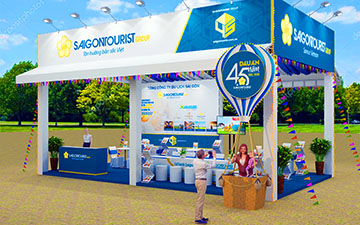
Quảng Cáo Dịch Vụ
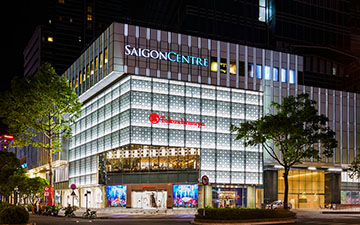
Quảng Cáo Sự Kiện

Quảng Cáo Khuyến Mãi

Biểu Trưng & Nhãn hiệu
Hỗ trợ chúng tôi và phát triển doanh nghiệp của bạn với chúng tôi. Mục tiêu của tôi là cung cấp thông tin kỹ thuật với khả năng truy cập sẵn sàng vào các tài nguyên, công thức và tài liệu tham khảo thường cần thiết trong khi thực hiện công việc của mình với tư cách là Kỹ sư hỗ trợ kỹ thuật. Các doanh nghiệp được liệt kê trong Nội dung được Tài trợ đã được lựa chọn cẩn thận vì tính độc đáo của chúng. Tuy nhiên, các quảng cáo liệt kê không được tài trợ sẽ được luân chuyển thay đổi hàng tháng.
ViBa Direct thiếu một ban cố vấn để thực hiện nghiên cứu và thuê các nhà văn với kiến thức kỹ thuật hiện đại. Việc tạo ra một ban cố vấn hiệu quả đòi hỏi nhiều hơn là một lời mời. Nếu không có sự tài trợ của bạn, điều này khó có thể thực hiện. Nếu công ty của bạn có nhu cầu quảng cáo, đặt biểu trưng, thương hiệu, biểu ngữ mời tham gia thảnh viên, hội viên cũng như các bích chương quảng cáo ở đây hoặc trên bất kỳ trang nào khác, xin vui lòng liên hệ với nhóm Dịch Vụ Khách Hàng Dịch Vụ Khách Hàng để biết thêm chi tiết.
We have applied the bio-inspired conceptual design method to the design of morphing (Một kỹ xảo hoạt hình bằng máy tính để vẽ xen các hình động) aircraft wing skins (based on the sea cucumber and human muscle) and of artificial kidneys (based on human kidneys). We concluded by stating that the output of conceptual design should be a detailed behavior model as well as working principles for each function in the behavior model. This information drives later design stages.
DFAM Method and System: The overall DFAM method consists of a traversal (chỗ giao nhau) of the frameworks (cơ cấu tổ chức, khuôn khổ, sườn, khung) in DFAM Framework from Function to Process, then back again to Behavior. The traversal from Function to Process can be called design, where functional requirements are mapped to properties and geometry that satisfy those requirements to structures and through process planning to arrive at a potential manufacturing process. Reverse direction, one can simulate the designed device and its manufacturing process to determine how well it satisfies the original requirements.
DFAM System and Overall Method shows the proposed DFAM system that embodies the method outlined above. To the right of illustrate image of DFMA System and Overall Method, the designer can define the DFAM synthesis problem, using an existing problem template if desired. For different problem types, different solution methods and algorithms (thuật toán, giải thuật) will be available. Analysis codes, including FEA (Finite Element Analysis), boundary element, and specialty codes, will be integrated to determine design behavior. In the middle of illustrate image, the heterogeneous (hỗn tạp, khác thể, không đồng nhất) solid modeler (HSM) is illustrated (heterogeneous denotes that material and other property information will be modeled). Libraries of materials and mesostructures enable rapid construction of design models. To the left of illustrate image, the manufacturing modules are shown. Both process planning and simulation modules will be included. After planning a manufacturing process, the idea is that the process will be simulated on the current design to determine the as-manufactured shapes, sizes, mesostructures, and microstructures. The as-manufactured model will then by analyzed to determine whether or not it actually meets design objectives.
Synthesis Methods: See Design for Additive Manufacturing by David W. Rosen - The George W. Woodruff School of Mechanical Engineering, Georgia Institute of Technology.




